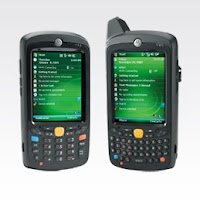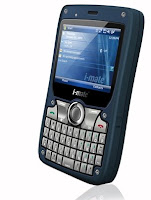Let me try to tie this all together. First, while our son was attending Boise State University, he helped us work on many mobile newsletters and mobile industry research projects that you may have read. Second, we flew into Atlanta, Georgia this week and while on a layover in Minneapolis, we checked our gate and next flight details on our Delta Airlines mobile iPhone app. Then when we landed in Atlanta, I used my iPhone TripIt! mobile app to reference the phone number of our hotel, and to call and ask if they had a shuttle service. We then rented a car from Hertz where they checked our reservation with some type of rugged tablet computer. And finally, at the entrances to many of the military bases the guards now use ruggedized handheld computers to scan drivers licenses. All the while we reported our progress across the country with our soldier via SMS and other friends via email.
Travel and mobile technologies are now completely integrated and essential. Any of you that travel know how completely dependent we all are on mobile technologies. All you have to do is run out of battery, lose connectivity or travel internationally to experience the frustration of being disconnected. You feel isolated and out of touch. Sometimes this feels good, but not when you are trying to be productive or pretending to work.
This week, all of my newsletters and articles will be published from our hotel room using wireless connectivity and mobile devices (I am counting my laptop as a mobile device). Another example of the benefits of mobile technologies.
Additional connections between mobile technologies and our family's adventures - our son is going to be an officer in a Combat Engineering unit. The Combat Engineering school just opened up a Robotics University at Fort Leonard Wood that utilizes some very cool real-time mobile technologies to maneuver the robots and communicate with its sensors. In addition, many of our military patrols in combat zones now carry handheld sensors and GPS tracking systems that can identify and locate the source of gun fire. Even more advanced versions of these sensors can be integrated into drones that can detect gunfire sources from over 25,000 feet (read more here).
One of the common tasks of combat engineers is road clearance. IEDs have become one of the major sources of casualties in modern combat and mobile technologies are an integral part of defending against this. UAV (unmanned aerial vehicles) or drones are used to patrol roads from the sky and these drones are often maneuvered from locations over 7,500 miles away. Can you image the kind of mobile communications and data link speeds that must be involved for a pilot to fly a drone from that distance?
Even more - The U.S. Marines are currently experimenting with assigning Android developers to different Marine units to help them quickly develop mission specific mobile apps that can be used on missions. This requires secure military app stores that have many pre-existing apps, web services, templates and widgets that can quickly be configured into unique missions specific apps.
At a higher level situational awareness, a requirement for modern network centric warfare, is dependent on mobile technologies to complete the picture of where the good and bad forces are, their status, and where your resources and assets are located. All aspects of this are dependent on secure mobile communications and real-time connectivity.
Understanding how dependent we are all on mobile communications and apps, makes me very concerned and interested in how we are going to secure all of these apps, networks and devices. Although not technical enough to understand all the details about mobile application and device security and management, I am certainly paying a lot more attention to this category of solutions these days.
 |
| SAP and Machine to Machine Communications and Integrations |
*************************************************************









